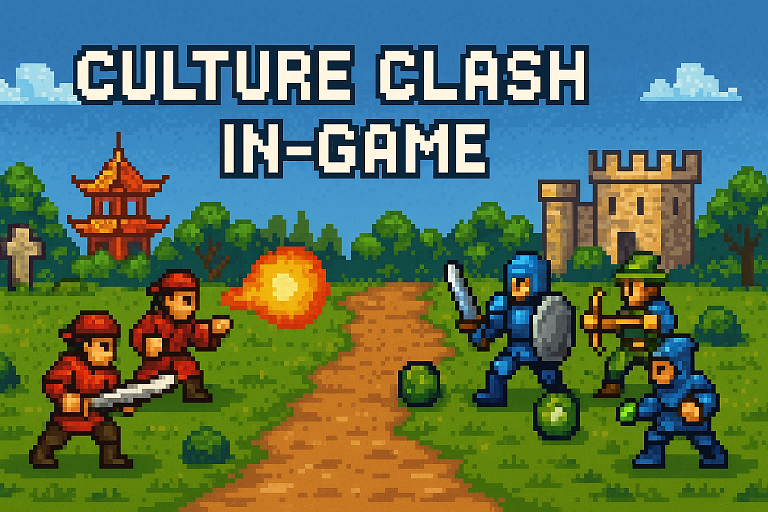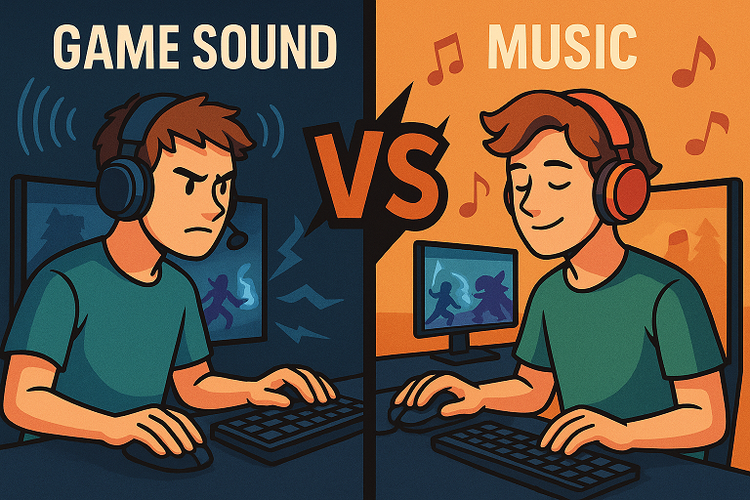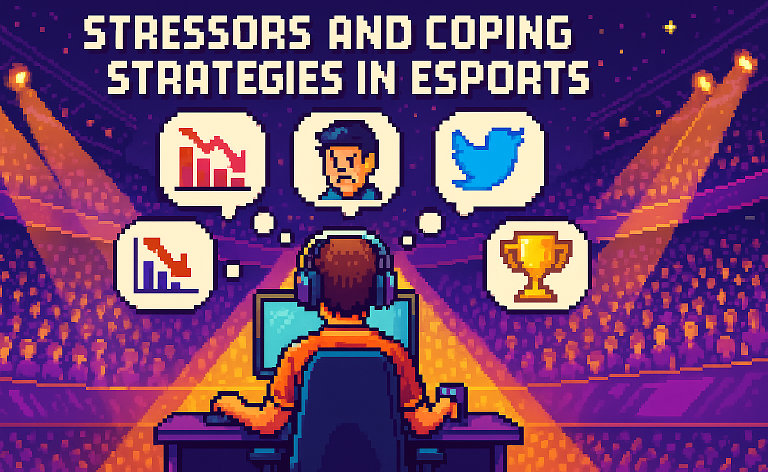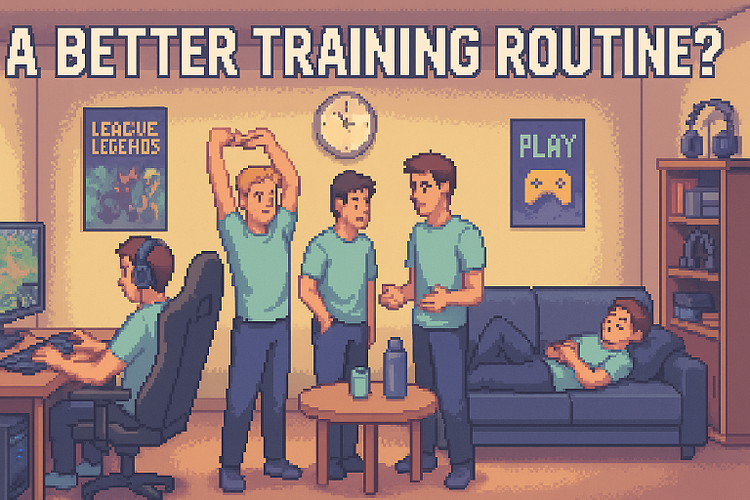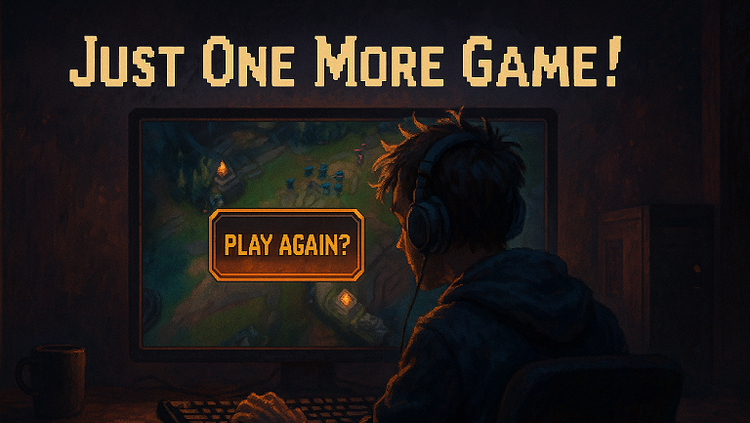COVID's Legacy on Esports: A Tale of Peaks and Valleys
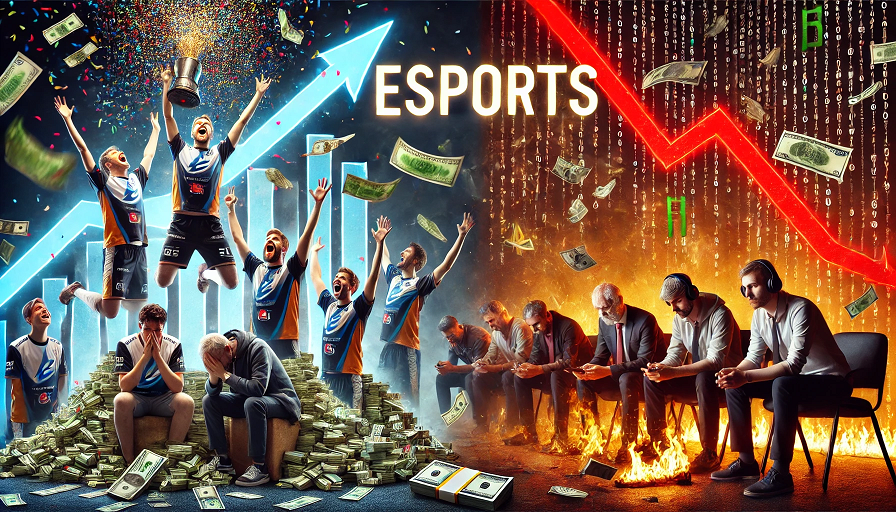
Hello friend 🙂
About a year ago, we heard about the Esports Winter, a period where esports organizations struggled financially. Today, I present some data and discuss how the COVID pandemic has impacted players, teams, and organizations, as well as the current state and its potential future.
• The Esports Winter (the financial struggle of esports organizations) may still be ongoing.
• The effects of the pandemic on players, teams, and organizations are unclear.
• We analyzed prize money, player and team numbers, as well as mean and median earnings per player data from 2018-2023.
• After initial drops in 2020, the prize money and mean earnings per player rose in 2021 before falling back to almost base levels in 2023.
• The number of players and teams increased as well before declining in 2022 and 2023.
• Throughout this period, the median earnings per player generally increased (except in 2023).
• These trends have important implications for players and organizations in esports.
• The general upward trend of the esports industry appears to be continuing.
🥶 The Esports Winter
About a year ago, we discussed the Esports Winter, which refers to a state of financial struggle for esports organizations. We saw layoffs, organizations filing for bankruptcy, or issuing share offerings (most notably, FaZe Clan with their heavy investor Snoop Dogg), and organizations exploring the possibility of selling themselves.
Reports indicated that this recession in the industry was due to the overarching economic situation. About a year earlier, the tech industry experienced a similar situation with mass layoffs. However, during the COVID pandemic, the esports sector experienced an Esports Summer. With everyone at home and having money to spend, many turned to gaming and bought products typically advertised in gaming (e.g., mice, keyboards, and computers).
As Victor Goossens, founder and co-owner of Liquid, echoed that in a recession companies cut back on their expenses for marketing [1].
When the recession hit and COVID was "over," many couldn't or wouldn't spend much money on gaming and gaming-related things anymore. This ripple effect of the pandemic and recession eventually hit the esports industry in 2023.
Now, a year later and about two to three years after the pandemic, it's worth looking at the situation again and discussing how COVID has impacted esports. Furthermore, we'll examine how it affected players and teams.
📊 Up, and Down, and Up again We go
To see the effect of the pandemic, I used data from esportsearnings.com.
- To track the overall situation in esports, I used prize money as a proxy. In a recession, when consumers don't spend, sponsors also spend less money on advertising. In turn, tournament organizers have less money to spend, reducing the prize money or the number of tournaments.
- I also looked at the number of active players and teams to see if the new circumstances impacted those who play competitively. We can expect only players who compete at least at an amateur/semi-professional level, as they have to earn money to appear in the data.
- Lastly, I included the mean and median earnings per player. This may help determine if players benefited or suffered from the pandemic and its ripple effects.
The data are shown in the figure below. Prize money, mean, and median earnings per player are adjusted for inflation. The base year is 2018, and each change is relative to that year. I looked at two years before the pandemic, 2020 and 2021 as the years of the pandemic, and the following two years (post-pandemic).
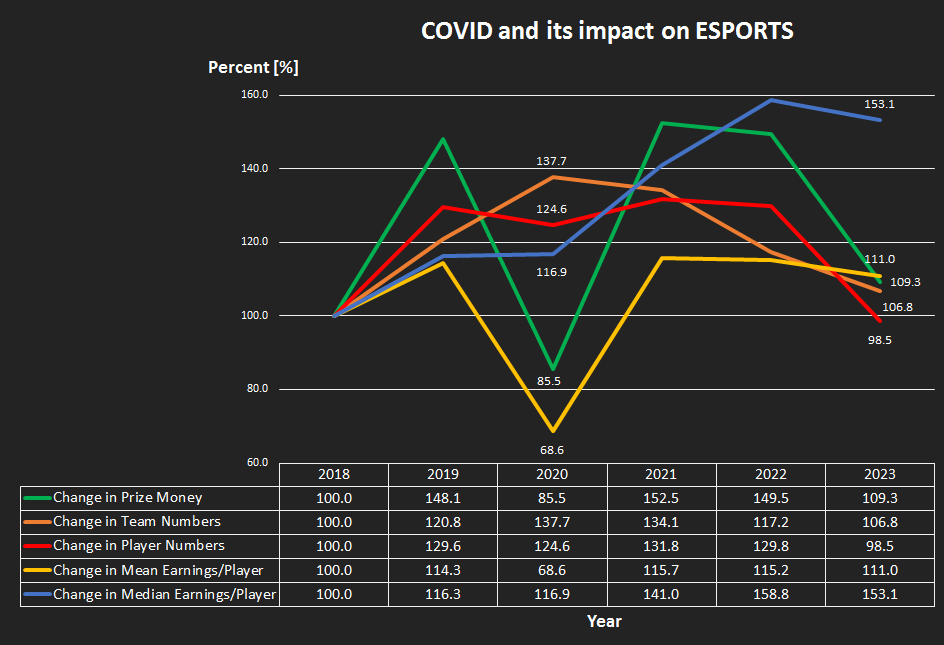
As one might expect, during the pandemic, prize money dropped about 15%, probably due to uncertainty. Interestingly, the previous year saw a 48% increase in prize money, though it's unclear why. In 2021, a new all-time high was reached, possibly because sponsors and tournament organizers saw an influx of new viewers into gaming and esports. More viewers meant more value, more tournaments, and more prize money. In the following years, the amount dropped to about 9% above the 2018 numbers.
With the increase in prize money pre-COVID, the numbers of players and teams also rose. This makes sense, as players and teams saw an opportunity to get a piece of the expanding pie. Furthermore, gaming and esports were on an upward trend, so the increase in players and teams wasn't solely due to prize money.
In 2020 and afterward, we can see that the trend of player numbers and the number of teams diverged. This is likely because players react faster to new circumstances than teams do. If you're a player in a 1v1 game or don't have a team, you're more likely to move in or out of esports, depending on the circumstances. Teams, on the other hand, may have some financial cushion to stay afloat during tough times.
Ultimately, the number of teams and players, similar to prize money, fell to or even below pre-COVID levels.
Regarding mean and median earnings per player, the story looks quite different—at least for one of them. The mean earnings followed the trend of prize money, albeit to a lesser extent. However, median earnings per player didn't fall at all until 2023. As you can see in the chart, it remained flat in 2020 and even increased in 2021 and 2022, up to about 59% compared to 2018.
What does that mean? Well, it means that the average player made 31% less money in 2020 and 16% more in 2021. The median player (with 50% of players earning above and below them) made 17% and 41% more, respectively. This tells an interesting story.
One might suspect that high-earning players made less money, while amateur and semi-professional players were on the winning side and still are.
This aligns with the Esports Winter idea, where teams cut back on expenses, including wages for high-earning players. Another possibility is that the median earnings per player are also affected by the number of teams and players in the industry.
Fewer teams and players during times of increasing prize money may lift the median.
The basic story from this data is that all measures (besides median earnings per player) are slightly up compared to the 2018 base level. Only the number of players has decreased by about 1.5%.
Everything directly related to money (prize money and mean earnings per player) fell during COVID, shot back up in 2021, and fell again afterward. However, it indicates an upward trend in the industry.
Higher median earnings per player may suggest that playing competitively is now a "better" option for individuals to pursue a career in esports or play as a side hustle.
🔮 What Lies Ahead?
It appears that gaming and esports are still on an upward trend. However, the overall economic situation for many teams and organizations isn't resolved yet. This year, several companies had to reduce their costs, especially production companies. Only bigger companies, such as EFG and Riot Games, seem to have enough resources to stay afloat or even expand.
The current economic situation, with high-interest rates and above 2% inflation, is not a business-friendly environment.
Unless we see a turnaround and a more stable situation in the economy, gaming and esports will continue to face challenges, especially for smaller teams and companies.
🧂 Take it with a Grain of Salt
Lastly, I want to note some limitations. The data and conclusions I presented are not based on rigorous statistical analysis and interpretations. They are meant to give you a broad view of the current state of the industry concerning players, teams, and organizations; take it with a grain of salt. 🙂
Thanks for reading, and I hope you all have a great week. Bye-bye,
Christian 😃
Join over 250+ (🤯) Gaming Science subscribers and become smarter every week.
"I love this type of content, thank you Chris."

